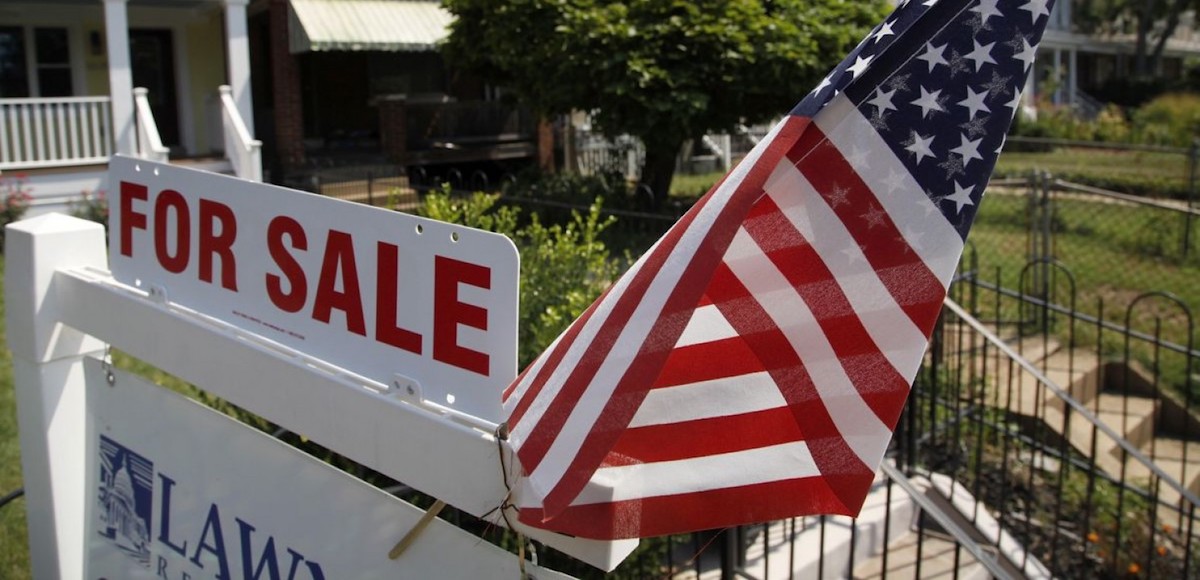

A U.S. flag decorates a for-sale sign at a home in the Capitol Hill neighborhood of Washington, August 21, 2012. (Photo: Reuters)
Existing home sales were weighed down in December by a lack of supply in the market, but the 1.1% gain made 2017 the best year in 11 years. Total existing-home sales — which are completed transactions that include single-family homes, townhomes, condominiums and co-ops — gained 1.1% in 2017 to a 5.51 million sales pace and surpassed 2016 (5.45 million) as the highest since 2006 (6.48 million).
In December, existing home sales fell 3.6% to a seasonally adjusted annual rate of 5.57 million from a downwardly revised 5.78 million in November. After last month’s decline, sales are still 1.1% above a year ago.
Further, analysts say 2017 saw substantial wealth gains for homeowners and historically low distressed property sales.
“Existing sales concluded the year on a softer note, but they were guided higher these last 12 months by a multi-year streak of exceptional job growth, which ignited buyer demand,” Lawrence Yun, NAR chief economist said. “At the same time, market conditions were far from perfect. New listings struggled to keep up with what was sold very quickly, and buying became less affordable in a large swath of the country. These two factors ultimately muted what should have been a stronger sales pace.”
The median existing-home price2 for all housing types in December was $246,800, up 5.8% from December 2016 ($233,300). December’s price increase marks the 70th straight month of year-over-year gains.
“Closings scaled back in most areas last month for this same reason,” Mr. Yun added. “Affordability pressures persisted, and the pool of interested buyers at the end of the year significantly outweighed what was available for sale.”
Total housing inventory3 at the end of December dropped 11.4 percent to 1.48 million existing homes available for sale, and is now 10.3 percent lower than a year ago (1.65 million) and has fallen year-over-year for 31 consecutive months. Unsold inventory is at a 3.2-month supply at the current sales pace, which is down from 3.6 months a year ago and is the lowest level since NAR began tracking in 1999.
“The lack of supply over the past year has been eye-opening and is why, even with strong job creation pushing wages higher, home price gains – at 5.8 percent nationally in 2017 – doubled the pace of income growth and were even swifter in several markets,” Mr. Yun said.
December existing-home sales in the Northeast fell 7.5% to an annual rate of 740,000, and are now 2.6% below a year ago. The median price in the Northeast was $261,400, which is 3.0% above December 2016.
In the Midwest, existing-home sales dipped 6.3% to an annual rate of 1.33 million in December, but are still 1.5% above a year ago. The median price in the Midwest was $191,400, up 7.8% from a year ago.
Existing-home sales in the South decreased 1.7% to an annual rate of 2.30 million in December, but are still 3.1% higher than a year ago. The median price in the South was $221,200, up 5.8% from a year ago.
Existing-home sales in the West declined 1.6% to an annual rate of 1.20 million in December, and are now 0.8% below a year ago. The median price in the West was $367,400, up 7.3% from December 2016.
The most damning journalistic sin committed by the media during the era of Russia collusion…
The first ecological study finds mask mandates were not effective at slowing the spread of…
On "What Are the Odds?" Monday, Robert Barnes and Rich Baris note how big tech…
On "What Are the Odds?" Monday, Robert Barnes and Rich Baris discuss why America First…
Personal income fell $1,516.6 billion (7.1%) in February, roughly the consensus forecast, while consumer spending…
Research finds those previously infected by or vaccinated against SARS-CoV-2 are not at risk of…
This website uses cookies.